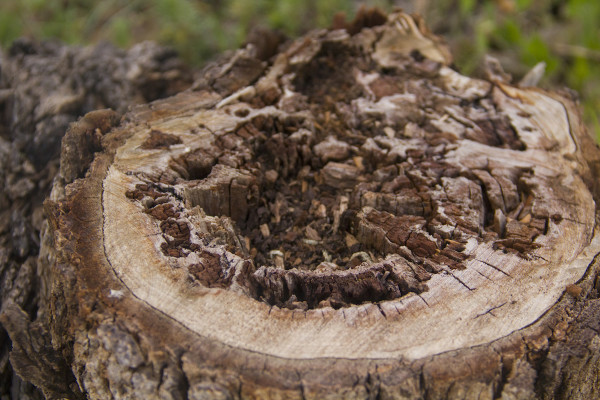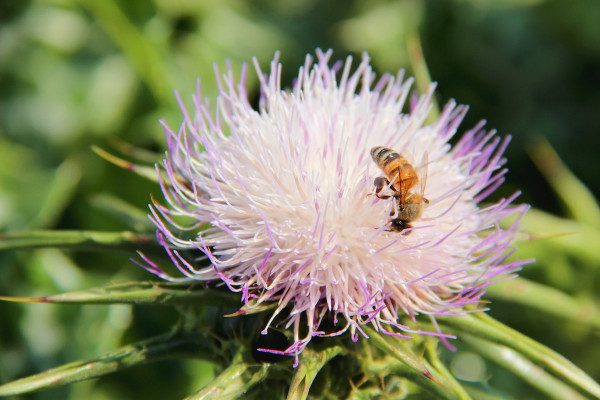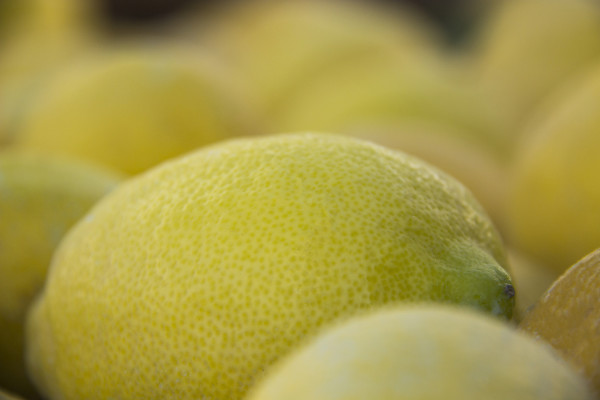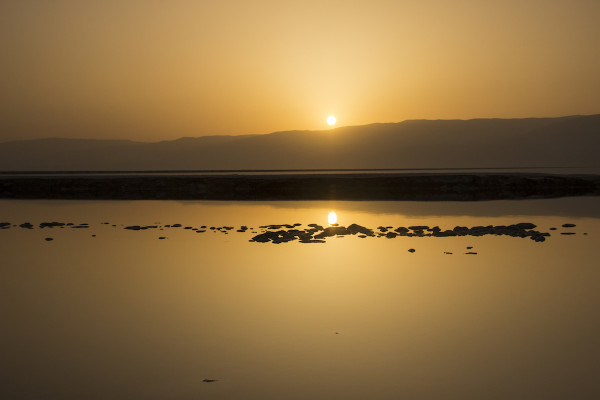The OU (Orthodox Union) is an international Jewish organization that spans 92 countries worldwide and provides kashrut certification for over 1 million food products. In addition, The OU’s programs for adults, students and teens are among the foremost Jewish social and educational programs in the United States.
In the year 2000, OU’s Israel branch began to work with unaffiliated teens in Israel’s geo-social periphery, establishing youth centers that currently operate in 20 municipalities and offer a variety of programs and options for underprivileged or disenfranchised youth.
The Jack E. Gindi Oraita Project works with teens from local secular high schools. The Makom BaLev Project hosts teens from National Religious high schools, and the Gesharim Project is a bar/bat mitzvah program open to all pre-teens.
Between 12 and 19 years of age, as they experience the most critical stages of development, these young adults face a wide range of additional challenges. Often, they lack a significant, positive adult role model to offer guidance and support and see them through these challenges.
The OU’s Youth Centers are designed to fill this gap: Here, teenagers enjoy after-school and evening activities which fill the need for values-based leisure time fun, while our staff of counselors acts as an anchor and island of stability in their often chaotic and confusing lives.
In the year 2000, an OU Youth Center was established in Sderot; some 150 teenagers are members of the clubhouse. The Makom BaLev Project offers a photo-therapy course, in which teens explore and express their emotions through photography. The object of the course is to teach the skills that will enable them to cope with their fears and other emotions that are commonly concealed beneath the surface by residents of Israel’s embattled southern communities. The teenagers who participated in the course photographed and wrote texts to accompany their work, as a means of opening up and sharing their inner world.
We are pleased and proud to present this catalogue of their work.
- Title: Quiet?! By Nativ Lugasi
- Title: The Half-Full Glass By Nadav Gabai
- Title: Wonders of Creation By Nadav Gabai
- Title: He dismantles mountains and crushes boulders By Noam Amar
- Title: Connecting Heaven and Earth By Nativ Or Lugasi
- Title: The Nectar and the Thorn By Asaf Ben Ami
- Title: Up the Road By Asaf Ben Ami
- Title: The Scent of Salt on the Water By Yarin Argov
- Title: The Family Tree By Yarin Argov
- Title: Shake Off Your Apathy! By Eden Ivgi
- Title: Starting Over By Eden Ivgi
- Title: Bees By Elad Edri
- Title: When Life Gives You Lemons By Elad Edri
- Title: The Secret of the Little Things By Nadav Gabai
- Title: And His Hands Were Faithful By Nadav Gabai
- Title: Rise Up! By Aviad Elmaliach
- Title: Rich Flavor By Aviad Elmaliach
- Title: This Melody Cannot Be Stopped By Daniel Malka
- Title: The Dead Sea Brings Forth Life By Daniel Malka
- Title: Not on Bread Alone By Noam Amar

Title: Quiet?!
Photographed by Nativ Lugasi
In this photograph I highlighted the contrasts that are the reality of living in the south of Israel and particularly here in Sderot.
In the face of the constant security threat that hangs over us at every moment, life goes on, full speed ahead – despite the great danger, the complex emotions that each siren awakens, or the explosion of a Kassam rocket.
Afterwards – there is quiet. A quiet that is full of power, of life, and of hope.

Title: The Half-Full Glass
Photographed by Nadav Gabai
I photographed a beautiful anemone. I went and saw it, and I wanted to photograph it. Then I lay down in order to get the shot and I suddenly noticed that there is a small hole in one of the flower’s leaves. I simply ignored it, because to me the anemone remained just as beautiful. I chose to look at the half-full part of the glass and not at the half-empty part. That little hole didn’t cause me to get up and walk away and give up on the shot; quite the opposite. I photographed it anyway, and this is one of my favorite photos, because I chose to see the half-full part of the glass. Sometimes we see things in a negative way and not in a positive way and we see only the bad things. From this photo I learned to always look at the half-full part of the glass.

Title: Wonders of Creation
Photographed by Nadav Gabai
In this shot I photographed three dandelions that grew side by side. I used this photograph as a means of talking about the gifts God gives us. What a beautiful homeland God has given us, with so many flowers and trees and grass and even the desert, which appears so boring but is beautiful to me, and can offer the photographer sights and scenes that are as beautiful as those of the greener areas of the country I have photographed. Everything in our country is beautiful; everything has its own unique beauty. If we look at the deeper aspects of things and try to see the beauty in each thing, we will certainly find it, just like the desert. I already know how beautiful it is, but there are those who think it is plain and boring, just a place with lots of sand, no water and terrible heat…
The desert has its drawbacks but in my eyes it is a place of great beauty. See what a beautiful country we have and what gifts we have received from God!

Title: He dismantles mountains and crushes boulders
Photographed by Noam Amar
I took this picture on the shore of the Dead Sea. In it, we see that despite the tremendous strength of a boulder, something as small as water or salt can smash the rock to smithereens. We can learn a lesson from this for our own lives: The smallest and weakest things can overcome the greatest and strongest things. This picture reminds me of the story of Rabbi Akiva who saw a stone with a deep, symmetrical hollow at its center. He wondered what could have created this perfect round indentation in the hard stone, for it clearly could not have been human handiwork. The answer was that just above the stone there was a slow and steady drip of water, and this constant drip of tiny drops of water had eroded the mighty stone, as the verse in the book of Job teaches: “Stones are eroded by water, and will be washed as dust to the earth, as the will of man is laid to waste.” (Job 14:19) In exactly the same way that drops of water can erode the hardest stone through constant effort, so it is possible to overcome any hardship.

Title: Connecting Heaven and Earth
Photographed by Nativ Or Lugasi
The farmer works the land: plowing, planting seeds, fertilizing and reaping. Alongside his hard work and tremendous effort, he turns to God in a prayer for rain. The farmer has faith, and he plants! The entire world turns to the Master of the Universe in prayer!

Title: The Nectar and the Thorn
Photographed by Asaf Ben Ami
This photo represents the ability to take and to receive; the positive and negative sides of everything in life are all “in the eye of the beholder.” There are those who see the thorns, which appear unpleasant and painful. There are others who look more carefully, more deeply, and they see that the thorns are actually a flower that gives something sweet – nectar. The same is true in life: Often, sweet things are born of adversity, from thorny situations, from things that are dry and tough. We tend to think that if we are snagged by the thorns, we will fall, and there won’t be anyone to help us back up. All we need to do is to look more carefully, to look more deeply; “Create an opening for me the size of the eye of a needle and I will create for you an opening the size of a great hall.” (Shir haShirim Rabbah 5:3). I don’t want to take the negative view; for my life, I want to side with the positive. I hope we can merit seeing the positive and good in our lives.

Title: Up the Road
Photographed by Asaf Ben Ami
There is a story told about a man who began to lose hope; Rosh HaShanah was only a month away and he began to think about all the resolutions he had made for the year before last Rosh HaShanah, but to his dismay, nothing in his life had changed, and he remained the same flawed and imperfect person he was. Despair began to worm its way into his heart until…he decided to seek advice from his rabbi. The rabbi listened, and asked: “Do you know how long it takes for Chinese bamboo to grow to its tremendous height – as tall as a building? In the first year, the tiny furrow in the earth is watered and fertilized, but nothing seems to happen. It is watered and fertilized for another year, and another, and yet another, and nothing happens. But,” the rabbi continued, “in the fifth year the bamboo suddenly shoots up toward the sky, and in the course of six weeks it grows 30 meters. How long shall we say it takes the bamboo to grow?” the rabbi asked. “Six weeks,” the man replied. “That is your mistake,” said the rabbi. “It takes five years to grow. For four years it develops a gigantic system of roots that will support it, and then it makes a giant leap. Growth requires patience. If we invest the time and nurturing, eventually, with time, we will see results, and will be able to make a leap forward, to heights we could never have imagined.”

Title: The Scent of Salt on the Water
Photographed by Yarin Argov
I photographed rocks in the water of the Dead Sea at sunrise. At first glance, the photo is of large rocks strewn about and a lot of salt. Taking a broader view, we see the background of the smooth, orange-tinted water. The rocks seem to disturb and upset the continuum of the calm, smooth tinted water.
This is like life: There are difficulties that disturb and challenge the flow of our lives. We can see these difficulties as something that holds us back, but when we approach life as an opportunity to use the difficulties to clarify and recalibrate, we can accept and even rejoice in the challenges. I used the rocks in the photo to create forward movement, as if they show the way forward. You can walk on the stones and avoid upsetting the stillness of the water.

Title: The Family Tree
Photographed by Yarin Argov
In this photo, I concentrated on a part of the tree that is generally overlooked – the roots.
The roots are complicated, intricate, earth-bound, and the give the tree all of its life force.
“Because man is like the tree of the field.” (Devarim 20:19) As the roots are to a tree, so is the older generation for a family.
The older generation has accrued life experience, has faced hardship, and without them we would not be here. That is why our connection with them is so vital.
“A generation that does not know its father and grandfather, does not know itself.” (Berl Katznelson)

Title: Shake Off Your Apathy!
Photographed by Eden Ivgi
I photographed the trunk of a large tree; from the outside the tree appears well grounded, strong and stable, but I was surprised to see that inside, the tree was broken, dismembered, disintegrated.
I pitied this tree and it was hard for me to walk away from it without photographing it, because it reminded me of broken people.
There are people who broadcast a persona of confidence and happiness but a closer look inside reveals that they are struggling with complicated challenges. The message I convey with this photo is that we should not pass by people like this. We should take the time to approach them, to speak to them in order to help them open up and heal their wounded hearts.

Title: Starting Over
Photographed by Eden Ivgi
I photographed an anemone in the late stages of decay. I combined a shallow field-of-depth technique with a high-depth field in order to emphasize the subject and bring out the beauty of the withering flower, and to emphasize the idea that each time a flower wilts and dies, a new cycle of growth begins.
This is equally true of life beyond the world of the flowers. There is a cycle of renewal in the life of each and every person, and with each renewal the life force becomes stronger. In addition, we must remember that in life, every time something ends, something new begins. It is not beginning again, but a continuation of the same path on a new level.

Title: Bees
Photographed by Elad Edri
Bees take pollen and nectar from the flowers. They are nourished by the nectar and the pollen. They take the pollen and bring it back to the nest. From bees, we can learn about creativity, about making honey from the flowers and the nectar.

Title: When Life Gives You Lemons
Photographed by Elad Edri
This shot was taken in an agricultural field. The lemons in the photo are awaiting transport. Every person can decide how they see the lemon: Eating it on its own, it will be sour, but adding it to a salad will bring out the taste of the vegetables, and everything will taste better.
There are so many uses for lemons. The fruit can be juiced, and the pits and peels can be used for cooking and baking.

Title: The Secret of the Little Things
Photographed by Nadav Gabai
I took an extreme close-up of a flower using a macro-lens. From a distance, it appeared very run-of-the-mill and uninteresting, a simple arrangement of leaves like any other flower. As I got closer, and with the help of the camera’s lens, I was able to see that the leaves were dry. I was able to differentiate between the different parts of the flower very clearly, and I saw the pollen and the vivid color of the flower, and I was awe-struck. As a teenager, I know that many people stigmatize kids my age; they assume that we are self-centered and selfish, have no regard for others and care only about ourselves, and worse… But if adults would stop for a moment and look at the small things that we do, the moments in which we know very well how to lend a hand to others, to volunteer and to do things to help others (such as the volunteer work my friends and I do in a school for autistic kids or occasionally in old age homes), they would understand that we are not always what they think we are, we are not self-centered, and they would change their attitude and smile at us more often, and we would feel better about ourselves. This would improve society and family life.

Title: And His Hands Were Faithful
Photographed by Nadav Gabai
I photographed a man facing the sun and wrapping himself in a tallit. The sun created a silhouette. This photo calls to mind people who try to appear perfect, who present themselves as tzadikim who have never sinned against another human being. None of it matters: sooner or later he will have to admit that he was mistaken. If not, someone will surely expose the mistakes he has made and the times he tried to escape the punishment he deserved, whether it be for stealing or for insulting someone and not apologizing, for being judgmental of others – eventually he will be made to see that he sinned, that he is a bad person, that he is the one who has stolen, insulted or hurt someone else. It doesn’t matter what it was, if it was a bad deed, and he did not own up to it and managed to get away without being punished, eventually the punishment will come. It doesn’t matter how much he denies it or runs away from it.
The tallit with which he wraps himself represents the pure element of the deed, the reason he did what he did. The silhouette in the photo represents the bad deed itself. The person in the photo is trying to cover himself in something pure and holy, in order to present himself as a tzaddik, but we see the silhouette of the person, which is the proof that he is no tzaddik, he is only pretending to be righteous, but he has done a bad thing. It doesn’t matter what he says or what he does to avoid being found out, because in the end the truth will come out.
The sun in the photo is the thing that cleanses. A person only has to want to come clean and God will see to it that he gets what he needs in order to come clean and purify himself.

Title: Rise Up!
Photographed by Aviad Elmaliach
“Rise up, arise, because you possess tremendous power. You have spiritual wings, wings of mighty eagles. Don’t deny their existence, because they may deny your existence. Seek them out – and they will reveal themselves to you immediately.” (HaRav Kook)
In this photo I chose to focus on the sky and to give less weight to the leaves of the flower. The photo expresses the importance of setting goals in life and striving to reach as far and as high as possible.

Title: Rich Flavor
Photographed by Aviad Elmaliach
I would like to invite you to Mama Deily’s (Mom, in Morroccan) kitchen, where the main ingredient is the spices. Preparing food means lots of varieties of pampering spices, added with a generous hand. The same is true of photography: Lots of photos, many different types of composition. Later, from the great quantity of photos, one stands out above all the others because it manages to capture the richness of the subject.

Title: This Melody Cannot Be Stopped
Photographed by Daniel Malka
These wind chimes were photographed on the Gaza border, the area from which Kassam rockets are fired at us in order to scare us and to silence the song of our lives. The wind chimes represent the message that war and fear will not silence our life’s song, and we will continue to make progress and to make music. Despite the fragile reality that we live in in this area, in which the quiet can be disrupted at any time, we stand strong and determined as we face the challenges and we will never allow fear to paralyze us.

Title: The Dead Sea Brings Forth Life
Photographed by Daniel Malka
This photo was shot at the Dead Sea. In it, we see the sunrise and we cannot understand why death should even be mentioned here. The sunrise tells a story of renewal and rebirth through the beauty of creation. This photo made me very happy as a photographer, and I hope that it brings happiness to people who see it, especially those who are frustrated by life.
The technique used to create this shot was to divide the frame into 3 vertical zones, where the sun is positioned in the upper and lower thirds. The photo shows a very flat, smooth surface, but the eye then catches the rocks below that appear to “dirty” the picture. On second thought, the rocks seem to blend in well and add to the beauty of the image. The technique evokes themes of life and death.

Title: Not on Bread Alone
Photographed by Noam Amar
I photographed loaves of bread at a stall in Jerusalem’s Mahane Yehuda market. The market is a very noisy place, a place of plenty, filled with color, aromas and tastes. The market is a place where all the senses work overtime and life is fully present.
I tried to convey this atmosphere and express it specifically through bread, the most basic of all foods for human existence.
If we are able to fully enjoy the simple, basic things in life, we will enjoy life much more.
The bread in the market is exactly the same as the bread we have at home, but the atmosphere is different, and the entire experience can be the same.
